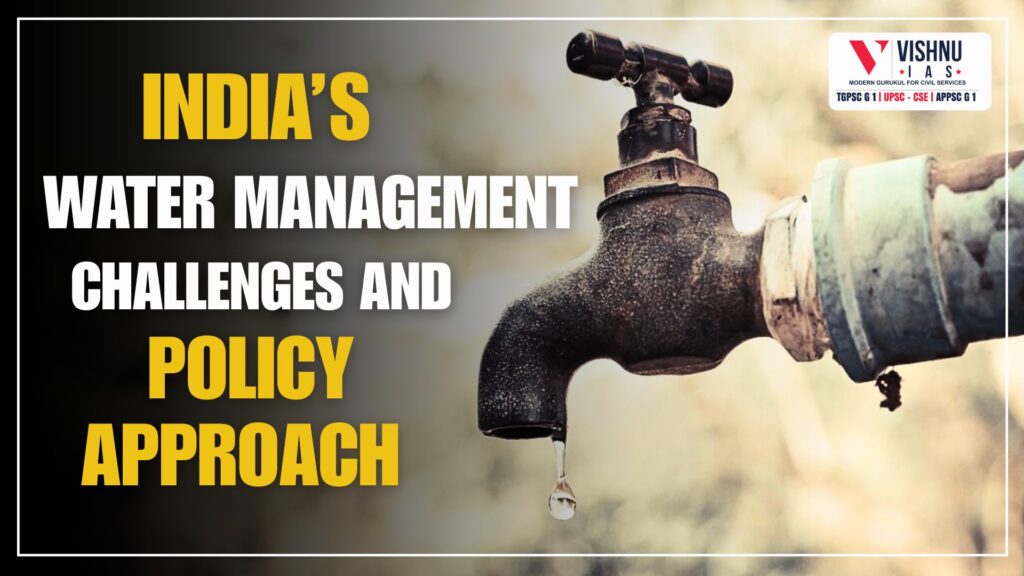India’s Water Management Challenges and Policy Approach
India is grappling with a severe water management crisis, characterized by unequal distribution, over-extraction, pollution, and fragmented governance. With a large share of the population dependent on rivers and groundwater for daily needs, sustainable water access is critical for the country's socio-economic stability and environmental resilience.
Key Dimensions of India’s Water Crisis
1. Water Availability and Stress
- India ranks among the world’s most water-stressed countries.
- According to the NITI Aayog (2018) report, nearly 600 million people face high to extreme water stress.
- Water scarcity could lead to a 6% loss in GDP if not addressed effectively.
- States like Haryana, Punjab, and Rajasthan extract groundwater at rates far exceeding replenishable levels, leading to alarming depletion rates.
2. Water Pollution and Quality Degradation
- As per the Central Pollution Control Board (2022), there are 311 identified polluted river stretches across India.
- Urban waste and untreated sewage continue to pollute key freshwater sources, including rivers and lakes.
- Industrial effluents and chemical waste contaminate groundwater reserves, posing serious health and agricultural risks.
3. Fragmented Governance and Policy Frameworks
- India’s river systems often traverse multiple states, leading to inter-state conflicts over water-sharing.
- Despite the National Water Policies of 1987, 2002, and 2012, integrated water resource management remains under-implemented.
- The Ministry of Jal Shakti, established in 2019, proposed a new water policy, but comprehensive legal and institutional reforms are still pending.
Sustainable Water Resource Management: The Way Forward
- Groundwater continues to support around 60% of India’s irrigation and 85% of rural drinking water needs.
- The Source-to-Sea (S2S) approach emphasizes the connection between rivers, coasts, and oceans to promote integrated and sustainable water management.
- Urban initiatives like Delhi's waterbody restoration projects demonstrate the value of nutrient management and ecological balance.
Conclusion: Towards Holistic and Resilient Water Governance
India must adopt a science-based and inclusive approach to water governance. This includes:
- Aligning policies with SDG 6 (Clean Water and Sanitation) and SDG 14 (Life Below Water)
- Integrating freshwater and marine ecosystem policies
- Leveraging technology-driven solutions for real-time water monitoring
- Promoting stakeholder collaboration and strengthening regulatory frameworks
Water security is central to India’s future. A cohesive strategy involving policy innovation, public awareness, and institutional accountability will be vital to overcome the country’s water crisis.


